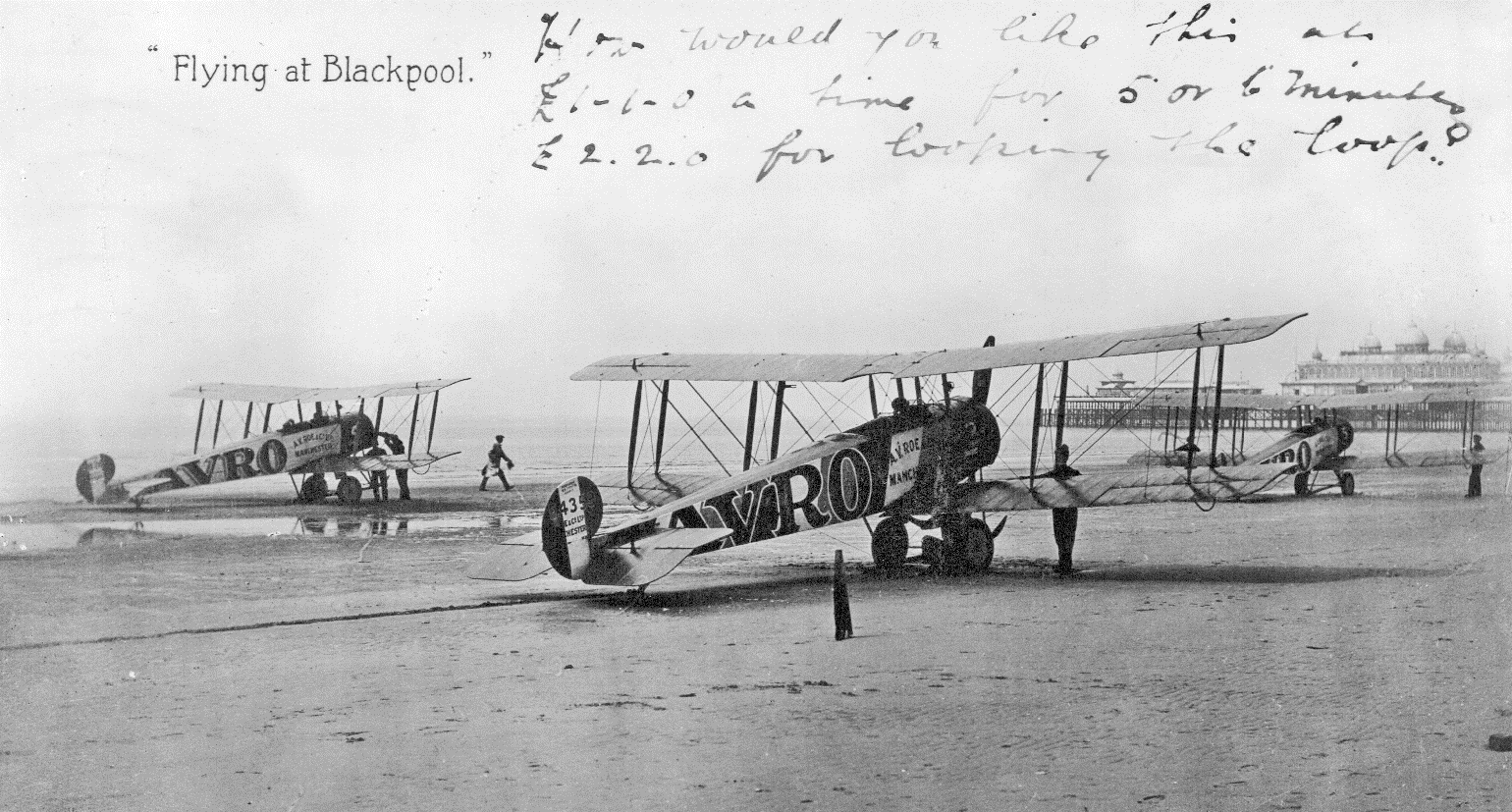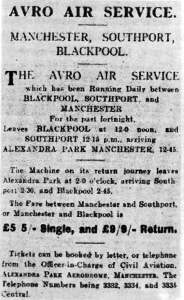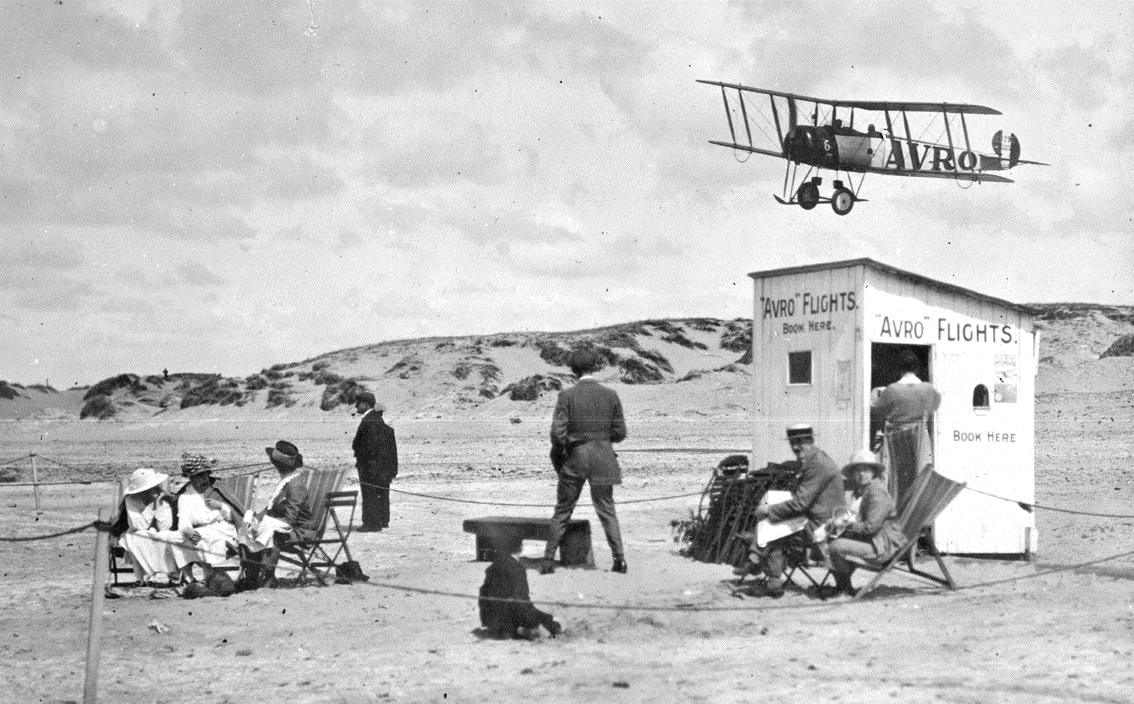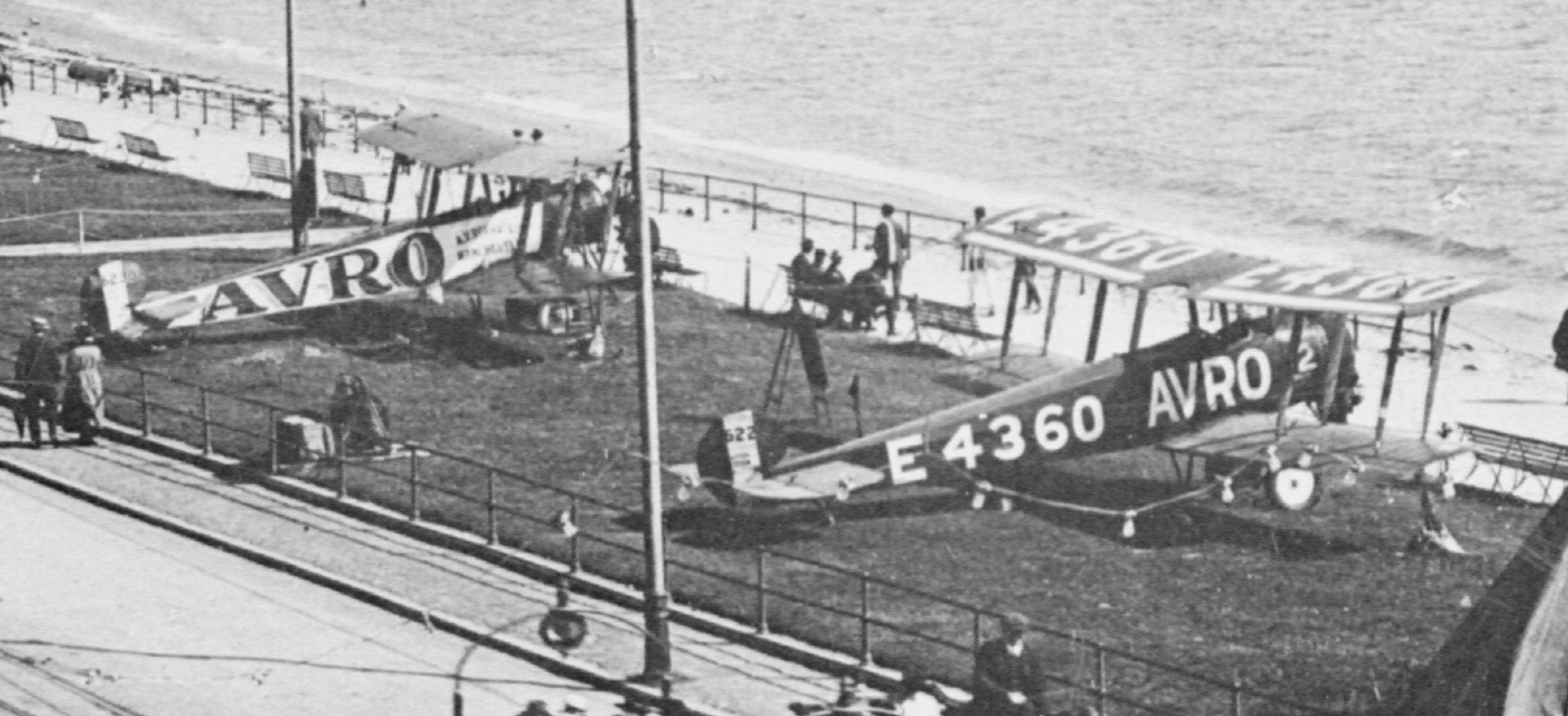When the First World War ended in November 1918, the official restrictions for civil flying were not lifted immediately as a state of war technically existed until the signing of the Peace Treaty in July 1919. In the meantime, a Civil Aviation Department was formed within the Air Ministry on 12 February 1919, and Winston Churchill, who became Secretary of State for Air, was instructed to prepare air traffic regulations, including the first airworthiness and registration requirements for aircraft. These regulations were signed by Churchill on 30 April 1919 and British Civil Aviation officially came into existence on 1 May.
However, the public had a number of opportunities to experience the thrills of flying before this date—Londoners were able to fly during the Easter holidays of 1919, and they took full advantage in spite of the short notice. At Cricklewood, three large Handley Page machines, piloted by Col. Douglas, D.F.C., Maj. Tool, M.C., and Capt. Hill, M.C., were kept busy each day taking up parties of passengers for half-hour ” flips ” at two guineas (now £2.10) a time, whilst at Edgeware, the machines of the London and Provincial school, piloted by Mr M. G. Smiles and Mr W. G. Warren, Jr, were in demand for flights at one guinea each.

The hand written note reads: ‘How would you like this. £1-1-0 (£1.05 in today’s money) a time for 5 or 6 minutes. £2-2-0 (£2.10 in today’s money) for looping the loop’.
Flying trips were also carried out at a number of seaside resorts, and A. V. Roe & Co. arranged for flights at Southport and Hamble, the trips from the latter, over Southampton Water, being especially popular. Contemporary reports mention that the first pair of passengers were the Mayor and Mayoress of Southampton (Alderman and Mrs Kimber). The three very experienced pilots G. L. P. Henderson, H. A. Hamersley, F. Warren Merriam that operated from Hamble used Avro 504Ks specially modified to carry two passengers in the rear cockpit, were able to carry 359 passengers at a £1 a head on the first day!

The above, and other, references indicate that many aircraft manufacturers and operating companies had anticipated that large numbers of the general public would want to experience flying for themselves. A. V. Roe & Co. immediately prepared itself to take advantage of the demand. At the same time, the Commanding Officer of No. 15 Aircraft Acceptance Park at Alexandra Park, Manchester, announced that accommodation had been set aside for the use of Civilian aeroplanes. A. V. Roe & Co. immediately rented one of the hangars there, where it became the home base for the newly formed Avro Transport Co. (ATC.) and centres for ‘joy-riding’, as it became known, were set up around the country.

On 6 May 1919, John Lord, a director of the company obtained authority from Blackpool Council to use a site on the sands opposite the Star Inn as a terminus of a Manchester-Southport-Blackpool air service. This service was inaugurated on Monday May 26 when two aircraft left Alexandra Park and the first scheduled domestic air service in Britain had commenced.
It ran for 18 weeks without experiencing a single forced landing, although occasional flights had to be cancelled due to poor weather conditions. The aircraft left Blackpool at noon and Southport at 12.15 and arrived at Manchester at 12.45. The return fight commenced at 14.00 and fares were 5 guineas (£5.25) for a single and 9 guineas (£9.45) return.
In the meantime, throughout the summer and autumn, the aircraft of the ATC which were variants of the very successful Avro 504K, flew from beaches and fields throughout the country providing ‘Joy’ flights to the public.
The ATC’s organisation was broadly divided into two areas, ‘Northern’ (Blackpool, Southport, Fleetwood, Rhyl, Liverpool and Manchester) with G. P. L. Henderson in charge, and ‘Southern’ (Hounslow Heath, Manston, Southsea, Weston-super-Mare, Brighton, Swansea, Paignton, and Porthcawl) under Capt. Duncan Davis. Much attention in the northern region was paid to ‘Wakes Weeks’, where aerial attractions proved especially popular with the large crowds of industrial holiday-makers.

Avro Transport also established ‘joy-riding’ centres at Douglas, Isle of Man, and at Cockshot Point on Lake Windermere, where Howard Pixton, Winner of the 1914 Schneider Trophy Competition, took up residence as Chief Pilot.
By the end of 1919 at least 30,000 flights had been made in machines belonging to Messrs. A. V. Roe and Co., Ltd., while many of the other joy-riding companies also used Avro 504Ks for pleasure flying. However, despite the profitability of its operations, in December 1919, Avro decided to discontinue its operations and the Avro Transport Co. ceased trading in 1920.
All images courtesy of the Avro Heritage Museum.
Very interesting
Thank you for Posting
I’m working on Gen Lahm Air Corps 2nd Army right now
Doc Snafu
eucmh.com